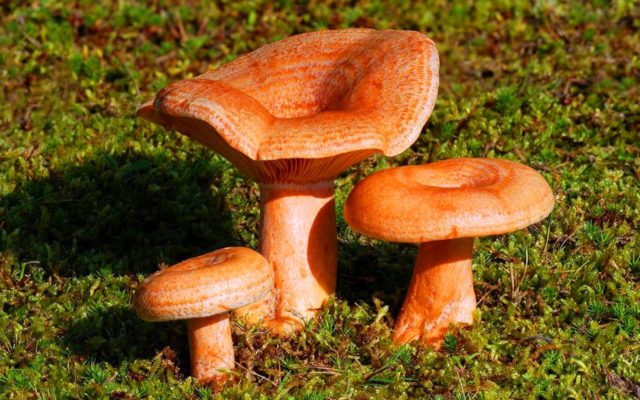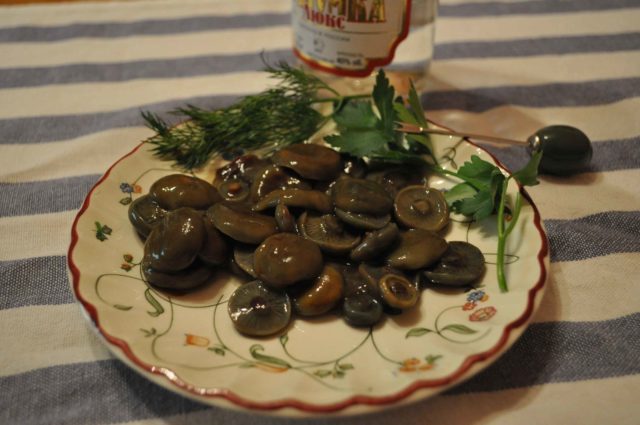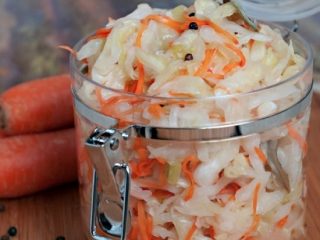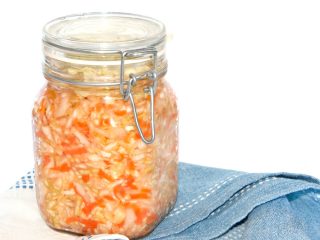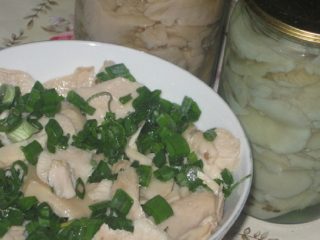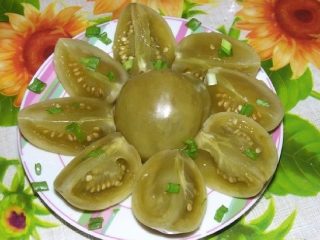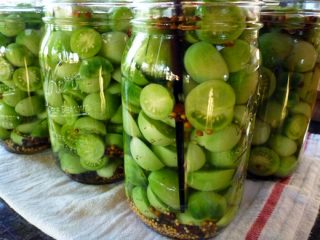Content
Saffron milk caps are the most popular representatives of agaric mushrooms. They contain a large amount of vitamins and microelements that are beneficial to humans. Due to its high protein content, it is popular among vegetarians. Fruit bodies are universal in terms of culinary processing: they are fried, boiled, and stored for the winter. There are many recipes for salting and pickling saffron milk caps. They contain milky juice, which oxidizes during processing, so every housewife wants to pickle saffron milk caps so that they do not darken; how to do this will be discussed below.
Why is the brine black when pickling saffron milk caps?
Salting is the most popular way to process saffron milk caps. The product is ready for use after 2 weeks. The color of the mushrooms during growth is bright orange, but when pickled, the saffron milk caps can turn black. This does not mean that the product has gone bad. If there is no mold or sour smell of fermentation, it is quite suitable for consumption.
The brine may darken for several reasons:
- Saffron milk caps vary in color: spruce ones are darker, pine ones are orange. When salted, the first ones always darken. If two varieties are placed in one container, the pine varieties will also darken.
- If the fruiting bodies were not completely covered with liquid, the part that was on the surface changes color under the influence of oxygen. Such a product loses its presentation, but retains its taste.
- The brine of saffron milk caps will turn black if the recipe proportions are not followed during processing and the preparation contains a large amount of spices. For example, an excess of dry dill seeds will change the color of the brine and the product will darken.
- If mushrooms are not processed immediately after picking, they darken. If they are exposed to air for a long time after processing, the milky juice on the slices oxidizes and turns green. After salting, the liquid may darken.
- Harvested in areas with poor ecology contain not only useful substances, but also carcinogens. When salting such raw materials, the brine will definitely darken.
- When collecting, it is recommended to avoid damaging the fruiting bodies. If they lie tightly in a container, the places where they are compressed will darken; after salting, the areas will darken even more and change the color of the liquid.
- The water may darken if the seal is broken. If the container is opened and left for a long time at a high temperature. This product is not suitable for further use.
How to salt saffron milk caps so they don’t darken
You can pickle saffron milk caps in two ways – cold and hot. The classic pickling recipe does not involve boiling the fruiting bodies. Basic rules for salting saffron milk caps so they don’t darken:
- Do not mix mushrooms collected at different times in one container. It is recommended to carry out processing immediately after collection. Using a sponge or clean napkin, remove fragments of dry leaves and grass from the fruiting body, and cut off the bottom of the stem.They do not wash the mushrooms, but immediately start pickling them so that the processed raw materials are not exposed to air.
- If the fruits are heavily clogged, they are washed in water with the addition of citric acid and immersed in boiling water for 10 minutes so that the saffron milk caps do not darken during pickling and the color of the liquid does not change. It is not recommended to soak the raw materials, as they may darken, which will make the workpiece unattractive.
- The processing sequence is followed: the raw materials are laid in layers and sprinkled with salt, gauze, a wooden circle and a weight are placed on top. Under pressure, juice will appear, completely covering the workpiece.
- Store the container at a temperature no higher than +10 0C in a shaded area. Higher temperatures lead to a decrease in the shelf life of products.
- If further storage is in glass jars, before packaging, the jars are washed with baking soda and doused with boiling water. The mushrooms are placed and filled with the brine in which they were salted, and tightly covered with nylon lids.
- Metal lids oxidize when in contact with liquid, which can also cause discoloration.
- To prevent the brine in the saffron milk caps from darkening, a minimum of spices are used when salting.
Store the product in a wooden, enamel or glass container, observing the temperature regime. Storage at high temperatures can cause fermentation and the mushrooms will become unfit for consumption.
Is it possible to eat saffron milk caps if they have darkened?
Changing the color of fruiting bodies during pickling is a natural process. Spruce saffron milk caps naturally have a dark cap; after processing they will turn dark brown (sometimes with a blue tint) - this is normal. If different types are cooked together, all the fruits may darken.
When using hot pickling technology, the fruiting bodies will become dark already during the processing process; boiled mushrooms will be darker than those prepared using the cold method.
Color is not an indicator of the quality of the product; when pickling saffron milk caps, the brine can turn black if the sequence and proportions of the recipe are not followed.
What to do if saffron milk mushrooms turn black
Signs that it is necessary to take measures to save the workpiece:
- the appearance of foam on the surface means that the liquid has begun to ferment;
- the fruiting bodies of the upper layer turned black, the caps became slippery;
- mold has appeared;
- The brine gives off a sour or musty smell.
Camelinas are distinguished by a high level of protein in the fruiting body, so a spoiled product has the smell of decomposition and acid. Such workpieces are not recycled. In other cases:
- The mushrooms are taken out of the container.
- The top layer is discarded.
- The rest are washed in water with added salt.
- The old brine is poured out.
- Wash the container with baking soda.
- Treat with boiling water.
- The saffron milk caps are laid in layers.
- Sprinkle with salt.
- Boil water, cool and add to the container so that the workpiece is completely covered.
- They place the load.
- Place in a cool place.
You can package the product in sterilized glass jars using the same technology.
If there is no musty smell, and mold has appeared on the surface, the mushrooms are washed, boiled for 10 minutes to kill the spores and processed according to the method described above. If the product is stored in a small container, it can be used for frying or preparing first courses.The fruiting bodies are first washed in cold and then in hot water, left to soak for 1 hour and used.
Conclusion
It is not difficult to pickle saffron milk caps so that they do not darken if you follow the processing recommendations. Do not leave the crop in the air for a long time. After cutting off the damaged areas and the remains of the mycelium, the product is immediately salted so that the milky juice does not turn blue and spoil the color of the brine. It is allowed to store the workpiece at a temperature not exceeding +10°C in a dark room. The product will retain its taste and nutritional value for a long time and will become a useful addition.
